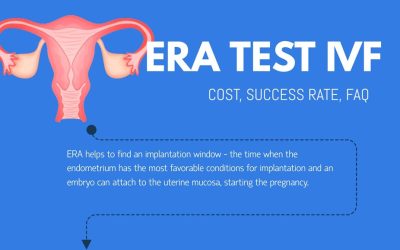- ABOUT
- TREATMENTS & SERVICES
Male Fertility
Genetics & Family Balancing
- SUCCESS STORIES
- CONTACT
- BLOG
Endometrial receptivity analysis, Endometrial Receptivity Array or simply ERA, is a genetic test designed to assess the receptivity of the endometrium (the lining of the uterus of a woman) during in vitro fertilization (IVF) to assess the optimal time for embryo implantation. That makes it possible for us to choose the best day to transfer the embryos during the menstrual cycle. This test is a personalized approach to determine the implantation window of a uterus that may vary from one person to another.

Ultrasonic and microscopic techniques enable us to appreciate many characteristics of the endometrium, like its thickness, cellular growth, and gland development. However, these direct observational techniques do not provide accurate estimation for receptivity. Thus, ERA is a crucial test in assisted reproductive technology, especially for those with a previous history of multiple implantation failures.

Many signaling pathways participate in achieving optimal receptivity of the endometrium. For instance,
The most used technique for the ERA test is taking an endometrial tissue biopsy. Either the patient undergoes a standard round of hormone replacement therapy or, in the case of a natural cycle, simply the theoretical time of receptivity is calculated (from LH surge). At that time in the menstrual cycle, the biopsy is taken instead of transferring a frozen embryo. The endometrial lining is scratched to obtain a tissue biopsy sample, which is then kept in a sterile container with strict temperature protocols and sent to the lab for genetic sequencing. Although it may cause some discomfort at the time, it is a minimally invasive procedure where general anesthesia and operation theatre are required only in exceptional cases like for patients with cervical stenosis (narrowing of the pathway used for biopsy). The patient can also request general anesthesia.
Since the inception of assisted reproductive techniques, the embryo has remained the central focus. In contrast, the maternal endometrium was considered a passive part of the reproductive process. Only good quality and maximum number of embryos mattered. Thus, the efficacy of IVF treatment remained very low.
Personalized Embryo Transfer (PET) guided by ERA has better results for pregnancy and implantation than Frozen Embryo Transfer (FET).

The majority of women undergoing IVF treatment for infertility who stand to benefit from the ERA test are those who, while having high-quality embryos, have experienced several unsuccessful embryo implantation attempts.
Choosing the right IVF center is decisive in the treatment of infertility couples. Any center with experienced IVF specialists, state-of-the-art embryology laboratories, and a highly qualified and professional team of embryologists practicing advanced techniques and covering maximum geographic locations would be the best choice. Australian Concept Infertility Medical Center is state-of-the-art fertility clinic in Pakistan.
Different conditions, such as healthcare providers, current inflation/taxes, and additional services, can cause the cost to vary. However, the ERA test is worth the money because it gives essential information about endometrial receptivity during IVF. 30% of IVF cycles fail due to embryo transfer outside the window of receptivity.
Kindly fill in the form below and your nearest Australian Concept Clinic will respond within 1 hour of receiving your request.
32-A, Rojhan Street, Block 5, Kehkashan, Clifton, Next to PRANZO Restaurant, Behind BBQ Tonight, Near BILAWAL Chowrangi, Karachi, Sindh, Pakistan 75600
116 Babar Block, Barkat Market, Near Salaar Center, Lahore, 54000.
3rd Floor, Aklas Plaza, G10 Markaz, Behind Babri Masjid, Sawan Road, Islamabad.
The Australian Concept Infertility Medical Center “Australian Concept” was established in 1998 with Australian technical collaboration in Karachi, Pakistan.